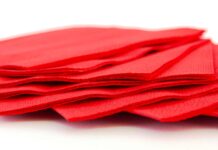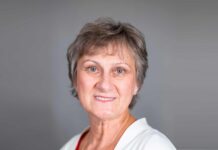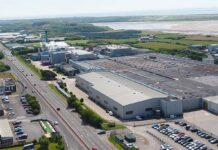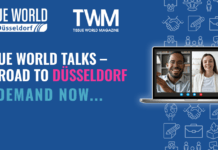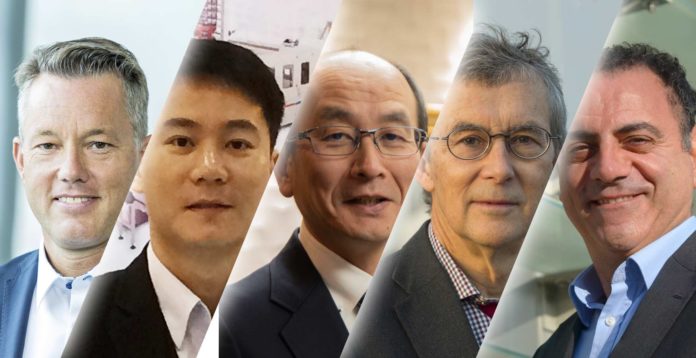
Leading tissue executives assess their companies’ priority issues – including saving energy, CO2 emissions, machine rebuilds, fibre usage, structured/textured products, remote expertise, market concentration, and Covid-19
TWM/1: How have the events of 2020 impacted the global tissue market, and how has your company responded?
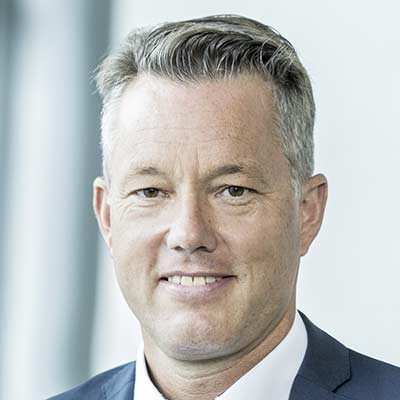
Klaus Blechinger, Vice President Tissue, Andritz: “We have the impression that the Corona pandemic caused contradictory developments in the tissue market. Our Chinese customers were the first to report that they were forced to close their mills for a certain period of time and then reports followed about panic buying of toilet tissue in Asian regions. When the virus expanded to other market areas, the panic buying increased as well. Our customers were forced to activate all their reserves to meet the exploding demand.
“In contrast to that, AfH tissue producers reported a remarkable decrease of sales due to lockdowns and travel restrictions from autumn 2019 (Asian countries) to end of 2020 (rest of the world). They tried to compensate a small part of the losses by the increasing consumption in the medical care industry. In some regions such as China and Middle Eastern Europe, the Corona infections decreased for some months and our customers reported that their sales figures started to go “back to normal” but unfortunately the world, especially the “western” world, was then hit by something comparable to a second wave of infections.
“Today, our customers report a similar situation like at the beginning of the Corona pandemic but not that intense: the demand for household tissue slightly increases, the demand in the AfH segment remains on a very low level and a recovery is only expected when a vaccine will hopefully be available to a broader mass of people.
“When we were hit by the Corona pandemic and its influence on the daily business life we could luckily react very fast and flexibly. This was possible due to three strengths Andritz has: our global presence, a state-of-the-art tissue pilot plant, and sophisticated digital solutions. As we have local tissue experts in all our key regions such as Asia, Europe and the Americas, we could cope with the travel restrictions. In addition, we were able to continuously conduct trials for our customers at our tissue pilot plant in Austria, report the results immediately and online to give recommendations. A couple of years ago we also launched the Metris Performance Centres which have a 24-hour online support and remote control. They are directly connected to the production lines of our customers with a comprehensive and secure connectivity to provide valuable support, in the commissioning and start-up phase but as well during normal operation.
“The experts in the Performance Centre can actively assist during those phases by keeping an eye on all the main parameters and intervening in an advisory and controlling capacity – if necessary and requested by the customer. This – independent from a pandemic like Corona – generally shortens the start-up period of a tissue line significantly from several weeks to just a few days. In addition, the plant can be prepared for further optimisation while in operation. Customers like Hungary’s Vajda Papír, Russia’s Arkhbum Tissue and some in South America and South East Asia are proof of the success.”
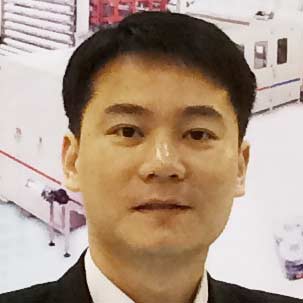
Sheng Qiao, Deputy General Manager, Baosuo: “The events of 2020 raised lockdowns in many countries and caused economic contraction. But for the tissue market, as far as we can see, the consumer market will keep on growing. For AfH, it’s also just a matter of time, and it’s expected to be a high increase after the restriction due to the pandemic.
“In order to support the prevention of the virus as well as to ease the demand for masks, we launched our fully-automatic mask production line, and build dust-free workshops in production for masks on the self-build machine.
“For the tissue business, we increased online communication and support with customers, launching a series of combined production lines with a more flexible products applicable range, such as rewinders that produce all range of roll products, from consumer roll to AfH roll, as well as folders that produce facial tissue and hand towel.”
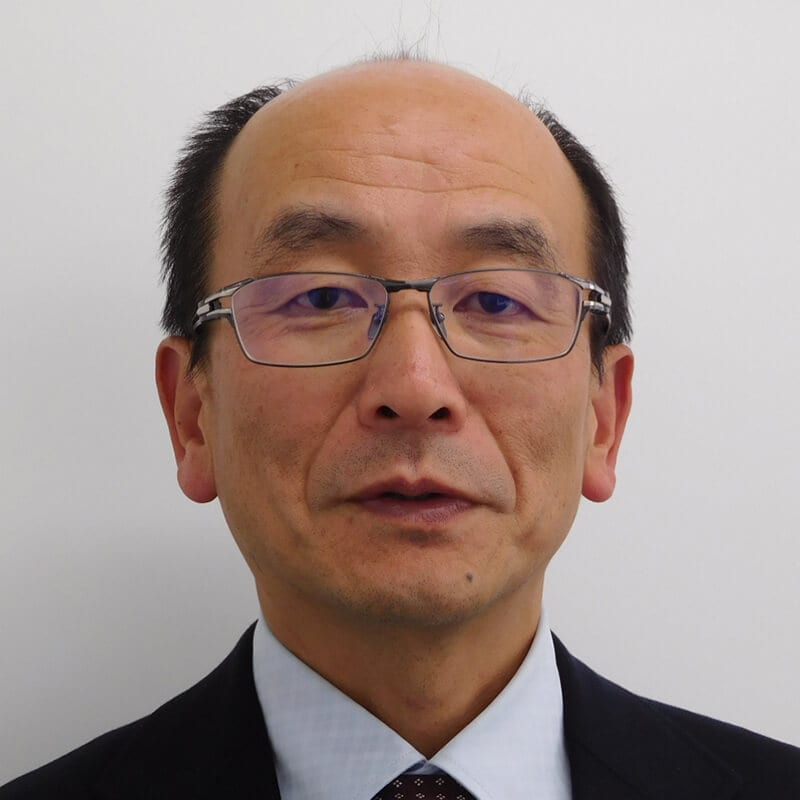
Shinji Goda, Director and General Manager of Engineering, Kawanoe Zoki: “We feel that Covid-19 has clearly impacted the supply-demand balance of each product. In Japan, we have seen the increase in towel paper, the decrease in AfH toilet rolls that had previously been supported by inbound tourists, the decrease in demand for facial tissue due to less cold and pollen allergy patients since people are wearing masks all the time, and the increase in household tissue products such as kitchen towels due to remote work or staying at home for longer periods of time.
“We have responded to the customers by delivering tissue machines and converting machines which comply with current product demand.”
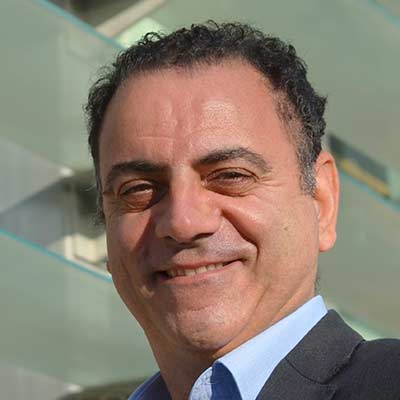
Marco Dalle Piagge, Sales Director, Toscotec: “Toscotec has always been operational during lockdowns in Italy, adopting all necessary measures in compliance with Covid-19 regulations.
“The pandemic had a strong impact on the tissue industry. At one end, we registered delays on some projects due to entry restrictions and other pandemic-related issues in Latin America and Asian countries. On the other end, in close cooperation with our customers we managed to find solutions to push ahead with many projects, which we successfully completed according to the original schedule, including erection on-site, commissioning and start-up. We continue working at mills, where we strictly implement all necessary measures to ensure the safety of all parties involved.”
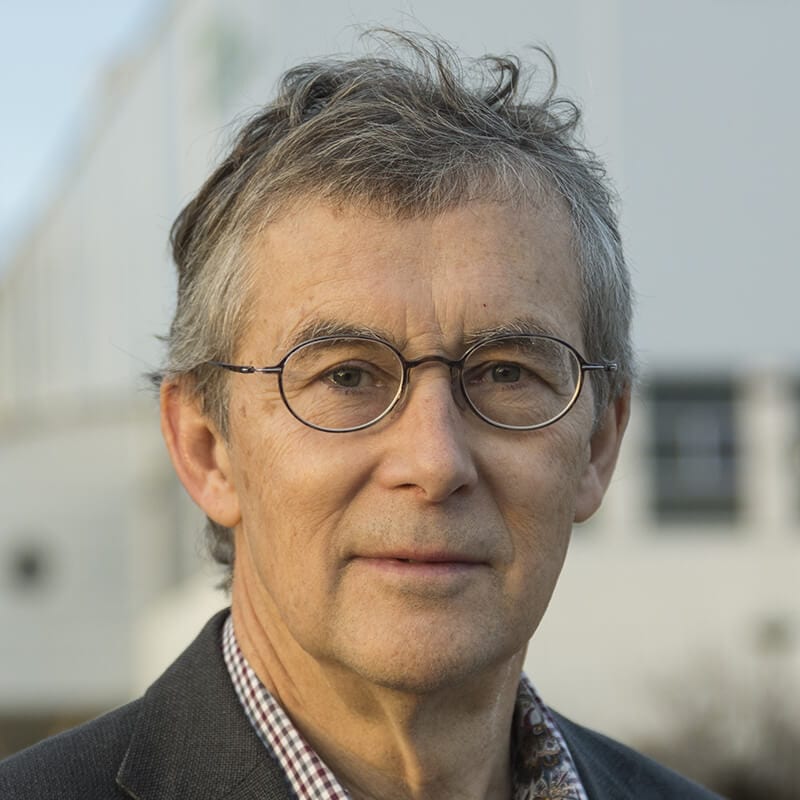
Ingmar Andersson, Senior Vice President, Valmet, Tissue Mills Business Unit: “In general, the demand for tissue making capacity for most markets has increased and we have received a lot of requests and orders for new projects, even more than a normal year, despite the ongoing pandemic and uncertainties.
“The exception in the demand is normally touristic places which have reduced their needs.
Valmet has continued projects under way towards delivery, installation and start-up without noticed delays.
“We have learned and developed new ways of supervising the installation and start-up. Valmet has resources in many countries that have supported during these difficult times. In addition, we have developed remote support using all the available ways to communicate verbally as well as using video-based tools. This has enabled us to make all the site efforts as agreed.”
TWM/2: What key tissue trends do you forecast for 2021?
Blechinger: “Due to the lockdowns and people working in home offices there will definitely be a rise in e-commerce and finished consumer tissue. Hygiene awareness may continue to be on a very high level as long as the governments promote and highlight its importance. When having a look on our recent orders, then we can see an increase in tissue machine capacity in the Asian regions, but likely investments in strongly hit areas like Europe and the Americas will also increase.”
Qiao: “People will have more care about hygienic than before the epidemic, and the rise of e-commerce will accelerate; all of this will support the growth of the tissue and hygiene industries.
“The increase for tissue consumption is worldwide, but in the African and Asian market the increase should be more significant as the current consumption in those areas is still at a low level.”
Goda: “In Japan as well, e-commerce is growing as the time spent at home increases. In addition, due to increased hygiene awareness the development of new household tissue products with antibacterial effect is progressing. Towel products necessary for wiping hands, desks, etc, will be developed for various purposes, not only at home but also in public places and will spread to places that were not previously recognised as necessary.”
Dalle Piagge: “Many tissue manufacturers around the globe have confirmed a rise in e-commerce revenues this year. The pandemic certainly speeded the process along, but I also believe that as producers make progress in offering improved digital experience to consumers, e-commerce sales will increase even more in the future.
“In 2020, hygiene-related awareness has definitely increased among the general public, and the idea that paper drying is more effective than hand dryers is now widely accepted. Consumption increased in household tissue – in particular in North America – but declined in the Afh market.”
Andersson: “General awareness of the importance of hygiene has increased the interest in paper towel. Many countries such as the US and Japan have abandoned Air Hand Dryers in public washrooms, and this has led to a higher demand for paper towel.
“We don’t expect that e-commerce will change the consumption amounts very much, it is merely the general standard of living and consumer behaviour that will drive an increased consumption. However, e-commerce will change sourcing and distribution.
“Traditionally, tissue products have been produced relatively locally to the consumers. Now, there is a global change where closeness to fibre, energy and general cost structure, thanks to size of facility, will open for shipping over long distance.
“The importance of well-established branded products is reduced since the access to high-tech production is available globally. Furthermore, major supermarket chains are promoting products with high-quality under their own names.”
TWM/3: What developments have you made in terms of energy in 2020?
Blechinger: “In the tissue production process, a lot of energy is consumed during the drying process. Thus, one of our R&D focus areas in 2020 was to reduce the need of thermal drying. On the one hand we focused on mechanical dewatering and thermal drying as one of the key cost drivers of the tissue production process: we improved our shoe press features, focused on the re-evaporation system (steam generator) and kept on offering our steel Yankee technology. On the other hand we had a close look on the interaction of premium-quality tissue production and energy consumption, namely on textured and TAD grades.
“The PrimePress XT Evo shoe press ensures both improved dewatering and better product quality, thus reducing the need for thermal drying. As a result, the energy demand of the tissue machine with shoe press is substantially lower. In addition, the Andritz edge control system and the unique and patented deflection compensation lead to better product qualities.
“Steam for tissue machines is typically produced by the mill’s boiler system. There are some technical issues with this arrangement: older, less energy-efficient steam production equipment, long steam piping layout, and excessive losses of steam pressure and energy. Andritz’s solution to solve this problem is the PrimeDry YES steam generator that uses exhaust air from the Yankee hood. Depending on the application, the PrimeDry YES can produce in the range of 25-40% of the steam required for the Yankee, which can save up to 15% in energy costs.
“On a tissue machine, the Yankee is a key component due to its consumption of energy and its impact on the quality of the final product. Therefore, it is essential to operate the Yankee in the most efficient and economic means possible. Our Steel Yankees, with diameters of up to 26ft., enable safe and energy-efficient drying. In combination with Yankee head insulation and a steam-heated hood there is a huge potential for energy savings. Our steam-heated hood for example operates in a temperature range around 200°C of impingement air temperature, which can provide an additional 15-25% of drying capacity compared to the Yankee alone.
“We had a close look on the interaction of premium-quality tissue production and energy consumption. We developed a tissue machine, PrimeLineTEX, for the production of textured tissue. This kind of tissue has a quality close to TAD but the production process is remarkably less energy intensive. As the trials at our pilot plant were very promising, we experience increasing interest in our product, especially from customers from South East Asia, Europe and South America.
“At the moment we’re working on an energy saving solution for the production of premium structured tissue (TAD).”
Qiao: “Saving of energy consumption is a long terms strategy and the key to the future. For tissue machines, the upgrade has enabled customer to have the same production capacity but with less consumption in water, power and gas.
“For converting machines, we have made improvements in machinery automation and capacity, so as to reduce the unit consumption. The most significant is the wide use of the auto transfer folder line compared to normal manual folders; it achieved a 100% accurate count, 50% unit power consumption, space occupy and labour cost.”
Goda: “We have approached heat recovery and energy saving in tissue machines from the perspective of selecting appropriate equipment and optimising operating conditions. Additionally, pursuing production that enables well-balanced operations with excellent stability has also been promoted as an energy saving measure that can reduce losses the most.”
Dalle Piagge: “First of all, the third-generation design TT SYD Steel Yankee dryers we started up in 2020 are giving optimal performances. This new product upgrade raises the energy efficiency standards for Yankee dryers globally in the tissue industry. We worked on the optimisation of the shell geometry and calculation methodology based on the large database pulling data of more than 200 TT SYDs currently operating in the world.
“Secondly, thanks to the close cooperation with Voith’s R&D team, Toscotec developed a new machine concept for structured tissue that ensures the highest tissue quality currently available on the market through a new technology based on low energy use.”
Andersson: “Energy efficient production has been on our radar for many years and most of our new developments are targeting at reducing the energy usage per case produced. We have many energy reducing features available for tissue makers but in many cases it boils down to reducing the one-time investment cost and some features will be deferred to a later time.
“Today we are not only aiming at saving energy but also to reduce CO2 emissions which includes both energy and fibre usage. The most powerful way to save energy as well as fibre is to increase the bulk and absorbency of any of the Hybrid Concepts.
“The well-established TAD technology will produce a product with great bulk and absorbency but usually TAD has higher energy consumption.
“As for the conventional technologies such as Crescent Formers, the most powerful energy saving is the reduction of moisture after the pressing using advanced pressing. This in addition with other ways to recapture and reuse energy, Valmet Tissue machine concepts have the lowest energy per tonne.”
TWM/4: Are we likely to see more M&A activity in the tissue machinery sector in 2021 and 2022?
Blechinger: “With our latest acquisitions – namely Novimpianti and Xerium a couple of years ago – we can already offer the complete product range for tissue production, from stock preparation to the reel including machine clothing, automation and pumps. Thus, most probably there will not be major acquisition activities in 2021/2022 by us, but you know… never say never.”
Qiao: “Yes, this is a market behaviour that M&A activity improves market maturity, integrating the existing technology and resources to better promote development of the industry. At the same time, some companies can also overcome difficulties and survive in this event.”
Goda: “Considering the current situation, we assume there will be more in the coming years. We will focus on whether the companies acquired by others will be able to respond finely to various customer needs in the future. The market is expected to continue to change, and it will be important for each machine supplier to achieve a firm relationship and meticulous contact with the customers.”
Dalle Piagge: “In 2020, we witnessed a robust market concentration in the making. As was reported, since the end of April 2020 Toscotec is part of the Voith Group. In the marketplace, this change is reflected in the fact that Toscotec is now responsible for new tissue lines and major tissue machines rebuilds for the Voith Group at global level. Voith strategically supplements our portfolio with spare and wear parts, digitalisation solutions, and services, among other offerings. As a result, tissue producers receive the most cost-attractive solutions tailored to their individual needs from a single source.”
Andersson: “We do not see any obvious consolidations ahead among the major suppliers in the near future. During this year we have seen Voith acquiring Toscotec, and Valmet joined forces with PMP Group, which have the integrated the Intelli-Tissue technology in its offering. In general, this has given various markets access to a wider scope of services and technologies which in the end is beneficial to the customers.
“In China, many suppliers are offering commodity technology and we expect some suppliers may take the lead and accept the challenge from international suppliers in the same way other industries have been developing, such as cars, phone technology and the wind power industry.”
TWM/5: What key technical innovations do you forecast for the global tissue machine market?
Blechinger: “Technologies to reduce energy consumption and the CO2 footprint and solutions for sustainable tissue production will again gain in importance. In addition, due to the restrictions caused by the COVID pandemic, digital solutions in the fields of online and remote support during all project phases (from order to commissioning, start-up and maintenance and continuous process optimisation) become more and more important.
“We are also focusing on the extensive use of alternative energy sources to replace fossil fuel-based source energies in the paper drying process. We are looking for a more and more sustainable tissue making process by reducing the carbon footprint generation of a tissue plant. The technology has greatly advanced in the industry and may now allow industrial applications that are becoming of interest also in the tissue making process.
“Another big challenge for the European market is looking at the tissue products with a new concept and redesigning the products themselves using the new available technologies. When looking at the whole tissue production it is important that the proper converting methods are associated to the new tissue products. At our tissue pilot plant we are supporting our customers to offer new paper concepts reel for converting trails and generating new product concepts. The aim is to save fibres and energy and develop products with same or superior quality.
“Another interesting topic on which our customers showed a lot of interest is the use of alternative fibres to wood fibres. The climate changes we are witnessing will offer new opportunities to the industry. Each global region is testing alternative fibres or fibre mixes to save wood and preserve the environment.”
Qiao: “A more flexible product range, easier installation and setting way, more convenient remote-control assistance and less energy, production material consumption.”
Goda: “Machines that can produce unique products are expected to be required in the future. We believe there will be an increasing demand for machines that are not mass-produced but with high added value, such as the one that can make higher basis weight, bulky products, or the machine that can produce various grades.
“We will strive for further effort to meet the customers’ requests from every perspective, including consultations starting from customer product development requests, proposals for optimized converting machines, flexible comprehensive engineering support including factory layout, and after-sales service.”
Dalle Piagge: “Digital solutions are playing an increasingly central role in the global market: in combination with key papermaking know-how, artificial intelligence allows us to increase the efficiency of tissue machines. Voith has already developed substantial expertise in digitalisation; in this respect, it perfectly supplements our portfolio with a wide range of digital solutions, designed to increase both operation and maintenance efficiency, as well as perform trouble-shooting and the optimisation of complete production lines.
“The other clear trend we see is a widespread demand to reduce energy consumption. Engineering solutions to save and recover energy in the machine’s drying section and related systems has always been a strong focus of Toscotec. I believe this effort is paying off: our new tissue lines and drying section rebuilds are achieving optimal energy efficiency performances, setting new records, and most importantly, meeting the customers’ efficiency targets.
“At the same time, the market is increasingly demanding premium quality tissue. Unfortunately, the request for high-quality structured tissue and low energy consumptions do not generally go hand-in-hand, but that is the challenging demand we are facing as tissue machinery manufacturers and it is precisely what which we are finding solutions for at the moment.”
Andersson: “We have noticed an increased interest for so called structured/textured products such as the well-established TAD technology, but also for relatively new inventions such as Advantage NTT, QRT and eTAD so called Hybrid Processes. Structured products have for a long time been a cornerstone to the products offered in the US market but only to limited extent for the markets in Europe, Latin America, Australia and South Korea. The hybrid process opens new possibilities for other markets to get access to premium products at a reasonable investment cost as well as low energy usage.
“As a company we have the complete portfolio from small to very large capacity and a range of technology from Dry Crepe to TAD and various Hybrid Concepts built on long time historical experiences.”
TWM/6: What will be the main challenges and opportunities in 2021?
Blechinger: “The main challenges will remain Covid-19 and the travel limitations coming with it, at least during the first months of 2021. However, I believe that this will also trigger many opportunities especially as the world has been woken up in the past few months to the increased and stronger need for more sustainable and greener solutions.
“One of the key questions is how – and how fast – economies will recover from the influence of the pandemic. How business is done has changed tremendously over the last months; we as machine suppliers have and will serve our customer with the same or even improved services that they are used to. Huge opportunities will show up in the area of digital solutions as global mobility is expected to further decrease while the demand of our customers to have continuous – at least online – support granted will for sure increase. For all that we can proudly say we are well equipped and prepared.”
Qiao: “The improvement of people’s hygienic awareness has given the tissue market a lot of new opportunity. It’s not only the rise of capacity, but also the requirement for a more convenient and new clean products category. We will focus on this trend, improve machine performance, guiding customers with new ideas.”
Goda: “Hygiene awareness will continue to grow globally for the foreseeable future, creating many opportunities for the industry. However, there are movements in the market to focus on the “next” approach to the products, and it will be necessary to carry out proactive activities for the next move and generation along with the current efforts.”
Dalle Piagge: “Given the current situation, the Covid-19 pandemic still represents a big challenge for the industry in many areas of the world. I hope we will soon be able to meet customers in person, but at the same time we can effectively conduct business through digital means.
“Having learnt this valuable lesson, we will not go back to travelling as much as we did in the past.
“Among the opportunities ahead, I certainly see the completion of the intense integration work we have been carrying out with the Voith Group in many areas, including R&D and product portfolio. These valuable synergies equip us to be successful in offering customers the most comprehensive and technologically advanced portfolio.”
Andersson: “Going into 2021, we will remain under the stress of Covid-19 implications. Tissue makers have firm plans and are moving ahead with projects around the world and we shall do our utmost to satisfy their plans and deliver according to plan.
“Due to the pandemic we will also see more of digital solutions and remote support where we already are doing commissioning, start-ups, pilot trials and FAT’s remotely.”

























